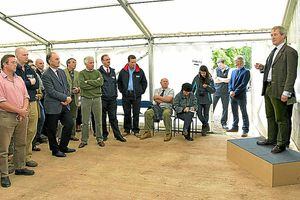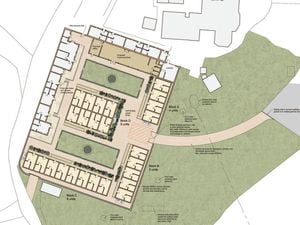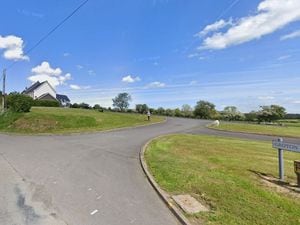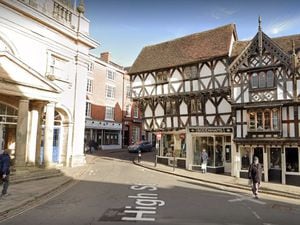New Sansaw dairy features New Zealand-style farming methods
The pressure may still be on incomes in the milk sector but two farming businesses in Shropshire have put their faith in the future and invested heavily in new dairy buildings and stock.
At Sansaw Estate at Hadnall near Shrewsbury £3 million has been invested to create a dairy unit with 1,200 cows in a low cost New Zealand system reliant on grazed grass and outwintering.
Not so many miles away Walford College Farm at Baschurch has put in a £1million dairy complex with loose housing, feeding and handling areas, a 24.24 herringbone parlour and a robot.

Both complexes were given a public airing last month illustrating how two completely different systems of milk production have the potential to keep milk and profit flowing into the farming business.
James Thompson estate manager at Sansaw is looking to replicate the New Zealand system of dairy farming in order to compete in global dairy markets with a low-cost system based on grazed pasture with very limited use of supplementary feeds.
The farm features three herds of 400 cows with the aim of producing about 4,500 litres of milk from each cow every year.
James took over the reins at Sansaw from his father, Robin, in 2008, after serving in Afghanistan with the Royal Marines and having completed a degree in Rural Land Management.
"This is the culmination of five years of planning and hard work," said James. "But we are very much at the beginning of the journey and most of the hard work is still to come. We are hugely grateful to the community for their support in this project as well as the dedication of our staff members for making this happen."
The New Zealand Jersey Friesian cross heifers were sourced in 2011, half from Ireland and half from the UK, to mate in 2012 and calve in spring 2013.
"They are small compact and robust cows that will produce the high quality milk that we are after," said James. "We had a challenging start because of the weather and had to buy in extra feed."
The herd has 450 hectares for grazing and a support dock of 300 hectares for outwintering cows, rearing youngstock, making silage and growing fodder feet.
Grass will be the mainstay of the diet supplemented with a little concentrate in the parlour, silage and fodder beet in the winter. The aim is to outwinter the majority of the herd but with indoor accommodation available for cows who are struggling.
The low cost, block-calving New Zealand system was chosen after careful research - the farm manager visited 40 farms in New Zealand and dairy units were visited closer to home.
"A large bank of land on the estate came back in hand giving us an opportunity and we wanted a business that we could scale up and become a real driving force," James explained.
"We are situated in a large milking area and there is demand for milk locally and globally and we saw a big opportunity for growth."
He also knew that he had the strength of a team of skilled people and the estate had the land mass to support a favourable response for finance from the bank.
"The project has been a bit controversial but we have had a smooth ride generally and support from Shropshire Council and our local parish council," he said.
The estate has installed miles of tracks across the fields and underpasses beneath the roads





